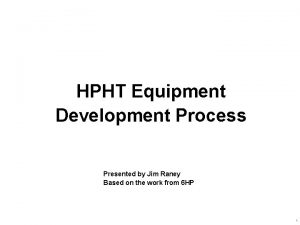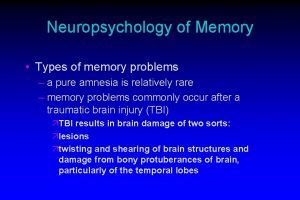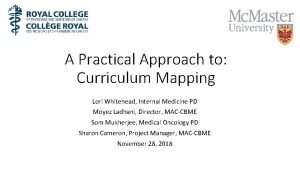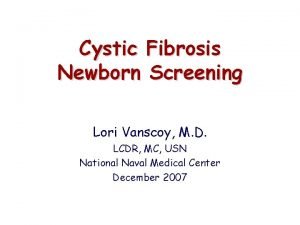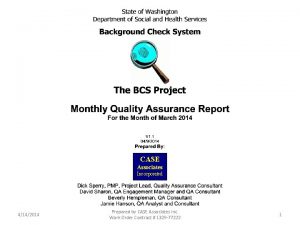Lori Raney MD Principal Health Management Associates John


























- Slides: 26

Lori Raney, MD Principal, Health Management Associates John Kern, MD Chief Medical Officer, Regional Mental Health The Role of CCBHCs in Monitoring and Managing Chronic Illnesses Speaker Name Title Organization

Mental Illness and Mortality Risk: 2. 2 times the general population 10 years of potential life lost 8 million deaths annually Walker, E. R. , Mc. Gee, R. E. , Druss, B. G. JAMA Psychiatry. Epub, doi: 10. 1001/jamapsychiatry. 2014. 2502

Predicting Cardiovascular Risk in SMI Osborn et al, JAMA Psych, 2015 72(2): 143 -51.

Research So Far PBHCI 2703 SPA PCARE HOME STUDY

Programs Generally Contain 3 Major Components: Primary Care Service Care Management and Tracking Health Behavior Change Kern J in Integrated Care: Working at the Interface of Primary Care and Behavioral Health, L Raney editor, American Psychiatric Publishing, 2014

CCBHC and Mortality Gap • Ideally, a way to help fund services that could impact mortality gap: – community-based mental and substance use disorder services; – advancing integration of behavioral health with physical health care; – assimilating and utilizing evidence-based practices on a more consistent basis – “Care coordination is the linchpin holding these aspects of CCBHC care together and ensuring CCBHC care is, indeed, an improvement over existing services. “ – Funded via PPR enhanced rate.

CCBHC: Screening and Care Coordination • • • “Care coordination, including requirements to coordinate care across settings and providers to ensure seamless transitions for patients across the full spectrum of health services, including acute, chronic, and behavioral health needs. Care coordination requirements shall include partnerships or formal contracts with the following: (i) Federally-qualified health centers (and as applicable, rural health clinics) to provide Federally-qualified health center services (and as applicable, rural health clinic services) to the extent such services are not provided directly through the certified community behavioral health clinic…. (v) Inpatient acute care hospitals and hospital outpatient clinics. ” Help transition individuals from the ED or hospital to CCBHC care ”The CCBHC is responsible for outpatient clinic primary care screening and monitoring of key health indicators and health risk. ”

Differences: Care Management Care Coordination *Deliberately organizing consumer care activities and *Sharing information among all of the participants concerned with a consumer’s care to achieve safer and more effective care. *This means the patient’s needs and preferences are known ahead of time and communicated at the right time to the right people, and that this information is used to provide safe, appropriate, and effective care to the patient. *Consists of identification of high-risk individuals and use of client information to determine level of participation in care management services; *assessment of preliminary service needs; *treatment plan development, which will include client goals, preferences and optimal clinical outcomes; *assignment of health team member roles and responsibilities; *development of treatment guidelines that establish clinical pathways for health teams to follow across risk levels or health conditions; *monitoring of individual and population health status and service use to determine adherence to or variance from treatment guidelines; and *development and dissemination of reports that indicate progress toward meeting outcomes for client satisfaction, health status, service delivery and costs.

Things we are working on at our site: • Monitoring of key health indicators: Leverage work already in place [PCBHI, for example] • Implement specific EBP's, including MI, CBT, medication-assisted smoking cessation, plus 2 more, one must be for kids. • Formal referral /coordination, co-location of services, screening, multidisc team meetings, MD consults, ongoing staff training and development. • Relationships with EDs • Data exchange • Mobile crisis • Detox, ambulatory detox, MAT for SA

Metabolic Quality Metrics for CCBHC • BMI • Control high blood pressure • Tobacco screen and cessation • • State Requirements Diabetes screening schizophrenia and bipolar disorder on SGAs Diabetes care for SMI with poor control Hb. A 1 c>9 Cardiovascular health screening SMI Health monitoring for SMI and cardiovascular disease

Roles of Psychiatric Medical Staff • There is now help to do a better job • Part of system that follows primary health care as matter of course. • Making these activities part of psychiatric business as usual • Asking about smoking at every visit • Accepting responsibility for all problems, including the physical ones • More flexible for access, like PCP’s • Call someone on their cell phone to coordinate care • Normalizing new models of care, where psychiatrist leads team: “This is what the best systems have. ” • APA/AMP statement about scope of practice

We Should Already do This: APA/ADA Guidelines for SGAs American Association of Clinical Endocrinologists, North American Association for the Study of Obesity: Consensus development conference on antipsychotic drugs and obesity and diabetes. Diabetes Care 2004; 27: 596– 601

Standards of Care: CVD Risk “CHODS” Chol, HTN, Obesity, Diabetes, Smoking 1. All patients all visits: BMI, Blood Pressure, ROS – Review of Systems 2. Patients on SGAs - Second Generation Antipsychotics, Lithium, Depakote, Tegretol: Baseline and Annual Labs 3. All patients with SMI: Annual Physical Exam or contact with PCP 4. Nicotine Cessation – Nicotine Replacement Therapy available on site • **Other considerations: Flu shots, Hep C, Hep B, HIV, cancer screenings

Workflow: Medical Assistants Do Vitals and Prep for Clinic

LAB FORM Review of Systems (ROS) ROS

ADA/APA Revised for Non-fasting Labs Monitoring Protocol For Patients on Atypical Antipsychotics Assessment Parameter Cut-offs Baseline 4 wks 8 wks 12 wks Quarterly Annually n/a x x x x Men: 40 in. , Women: 35 in. x Hemoglobin A 1 c Pre-DM: >5. 7%, DM: >6. 5% x x x Random Plasma Glucose Pre-DM: > 140 mg/d. L, DM: > 200 mg/d. L x >140/90 mm. Hg x x x Non-HDL: >220 mg/d. L; or 10 -yr risk > 7. 5% x x X Medical and Family History, Including CVD >7% gain over Weight, BMI (kg/m 2) baseline or >25 kg/m 2 Waist Circumference Blood Pressure Non-Fasting TC and HDL 15 x x Nonfasting Screening for Cardiovascular Risk Among Individuals Taking Second Generation Antipsychotics. Vanderlip et al. Psychiatric Services, Vol. 65 No. 5. 573 - 576

• 50% of deaths in SMI population are due to smoking related cause • Psychiatrists counsel patients less frequently regarding cessation – <15% vs 90% for PCPs • Education issue? Reluctance? Belief not interested in quitting? Williams, et al, Psychiatric Services, October 2014

Tracking System: Form Development

Tracking - The “Purple Sheet”

Performance Measurement s! s e cc r C b ele Su e at

PDSA Cycle for Continuous Quality Improvement

All Staff: Counseling for Lifestyle Issues Seen as Their Mission! • • Something YOU want to do Reasonable Behavior-specific Answer the questions: What? How much? When? How often? • Confidence level of 7 or more Kopes-Kerr, Am Fam Physician. 2010 Sep 15; 82(6): 610 -614

Using Dashboards For Patient Education Wellness Report Cards

E & M Coding for Complexity • HPI – mixed behavioral health and physical health issues ex: schizophrenia, smoking, obesity – 3 problems addressed in the visit • ROS: 2 plus systems • Examination: must have 3 of 7 elements of vital signs • Data: ordering and reviewing labs • Problem points: from HPI – what is stable (1 point), not improving (2 points), new problem, etc

24

Lori Raney MD Principal Health Management Associates lraney@healthmanagement. com John Kern MD Chief Medical Officer Regional Mental Health John. kern@regionalmentalhealth. com
 Steve raney
Steve raney Sugar cane alley analysis
Sugar cane alley analysis Fitzgerald health education associates
Fitzgerald health education associates Fitzgerald learning portal
Fitzgerald learning portal Health psychology associates
Health psychology associates Pha associates
Pha associates Dacbn meaning
Dacbn meaning Lori leiter
Lori leiter Lori fresina
Lori fresina Met life
Met life Lori hanson dnr
Lori hanson dnr Elex searching for clues
Elex searching for clues Lori lynass
Lori lynass Lori whitehead
Lori whitehead Self actualization rogers
Self actualization rogers Lori stromness
Lori stromness Climatogram maker
Climatogram maker Lori gillen sba
Lori gillen sba Trishna and krishna
Trishna and krishna Lori kizirian
Lori kizirian Lori simon-rusinowitz
Lori simon-rusinowitz Florida doci
Florida doci Lori cabrera
Lori cabrera Cystic fibrosis irt
Cystic fibrosis irt Lori kempe
Lori kempe Maksimo lori
Maksimo lori Lori raetzman
Lori raetzman
